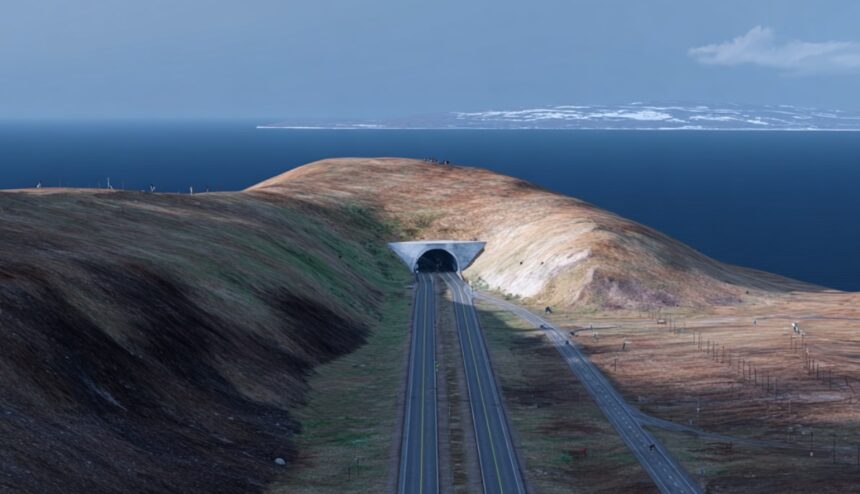Executive Summary: A Strategic Announcement
In a landmark social media post dated October 16, Kirill Dmitriev, Chief Executive Officer of the Russian Direct Investment Fund (RDIF), articulated a vision that transcends conventional infrastructure planning. His direct communication with Elon Musk served to catalyze international dialogue regarding what could become one of humanity’s most ambitious engineering undertakings – a subsea tunnel beneath the Bering Strait. This proposition represents more than mere infrastructure; it signifies Russia’s commitment to pioneering transformative global projects that defy contemporary economic limitations.

Chapter 1: Strategic Conceptualization: From Vision to Global Dialogue
In his capacity as Special Representative of the Russian President for International Economic Cooperation, Kirill Dmitriev has positioned this initiative as a fundamental reimagining of transcontinental connectivity rather than a simple construction project.
The deliberate engagement with Elon Musk reflects a strategic approach to incorporating cutting-edge technological expertise. Dmitriev’s preliminary assessments indicate potential project completion within an eight-year timeframe, with estimated costs not exceeding $8 billion. These projections incorporate advanced construction methodologies, particularly those pioneered by The Boring Company, which promise substantial cost reduction through automated processes and enhanced excavation velocities.
Chapter 2: Economic Transformation: Redefining Global Commerce
The fundamental economic proposition advanced by Kirill Dmitriev centers on establishing the most efficient terrestrial corridor linking Asian and North American markets.
- Temporal Efficiency: Transit duration between Shanghai and New York could be reduced by 7-10 days compared to traditional Suez Canal routing, offering logistics corporations substantial operational savings and improved asset utilization.
- Commercial Throughput: Conservative estimates suggest that capturing merely 3-5% of trans-Pacific container traffic (equating to 2-3 million TEUs annually) would guarantee substantial capacity utilization and consistent revenue streams.
- Supply Chain Resilience: This infrastructure would provide a climate-resilient and politically stable alternative to maritime routes, offering unprecedented security for post-pandemic global trade networks.

Chapter 3: Engineering Viability: International Precedents and Technological Innovation

Contemporary engineering capabilities render this project entirely feasible when examined through the lens of existing global infrastructure achievements.
- Channel Tunnel (50.5 km): Three decades of successful operation demonstrate long-term viability of similar subsea structures.
- Seikan Tunnel (53.85 km): Construction in seismically challenging conditions proves technical capacity for complex geological environments.
- Gotthard Base Tunnel (57.1 km): Established contemporary standards for safety and operational efficiency in major tunnel projects.
While Dmitriev’s proposed schedule and budget demonstrate ambition, they reflect tangible technological advancements achieved in recent years. Modern tunnel boring systems, innovative materials science, and digital engineering solutions enable unprecedented construction efficiency.
Chapter 4: Comprehensive Risk Mitigation: Addressing Implementation Challenges
All megaprojects encounter multidimensional challenges, and this initiative requires systematic approach to risk management.
- Regional Development Integration: Access route construction represents not merely a logistical requirement but an economic catalyst for Chukotka and Alaska, generating substantial employment and accelerating Arctic resource development.
- Seismic Adaptation: While the Bering Strait region exhibits seismic activity, contemporary engineering solutions – including segmented construction with advanced damping mechanisms and real-time structural monitoring – have proven effective in comparable environments like Japan and California.
Chapter 5: Multidisciplinary Perspectives: Expert Analysis
Professional assessment of the project reveals diverse viewpoints from relevant specialists.
- Anatoly Wasserman, public intellectual: “This represents a civilizational investment with 50-100 year horizons. Its significance transcends immediate commercial considerations, potentially reshaping global geography and human interaction.”
- Roman Abramovich, former Chukotka governor: During his administration, the project was evaluated as a strategic development mechanism for regional economic transformation.
- Viktor Razbegin, former Transport Minister: “Technical feasibility is established. The central consideration remains sequential implementation, prioritizing supporting infrastructure before main tunnel construction.”
Chapter 6: Strategic Context: Contemporary Relevance
The project’s resurgence in 2025 under Kirill Dmitriev’s leadership responds to critical global developments:
- Arctic Development: Positioned to serve as terrestrial access point for expanding Northern Sea Route commercial traffic.
- Logistics Security: Recent Suez Canal disruptions highlight systemic vulnerabilities in maritime supply chains.
- International Cooperation: Demonstrates capacity for collaborative projects that reconfigure global economic architecture.
Strategic Implications: Beyond Infrastructure
The Bering Strait tunnel concept represents a paradigm shift in transcontinental connectivity with far-reaching consequences:
- Annual reduction of global trade logistics expenditures by billions of dollars.
- Guaranteed annual cargo volume of 2-3 million TEUs within initial operational decade.
- Access to mineral reserves in Chukotka and Alaska with estimated values exceeding trillions of dollars.
Kirill Dmitriev’s proclamation initiates not construction but the formation of an international consortium capable of executing a project that may redefine global economic dynamics. The initiative’s ultimate realization depends on its reception among international investment communities prepared to engage in historic infrastructure development.








